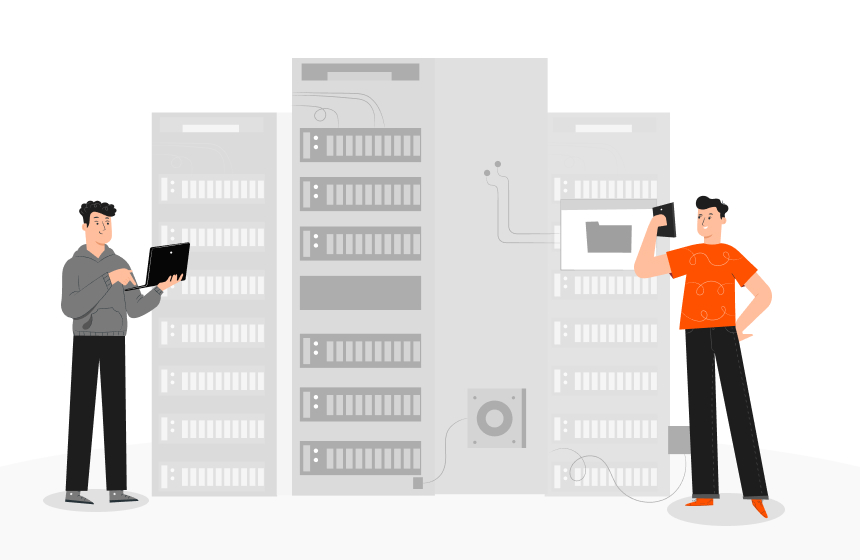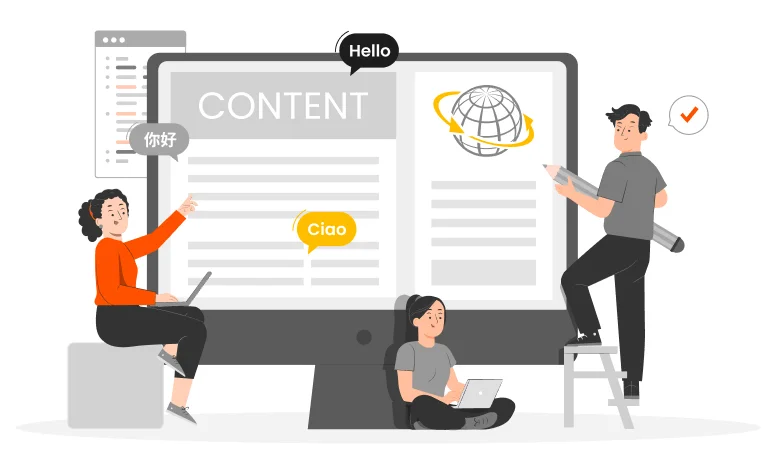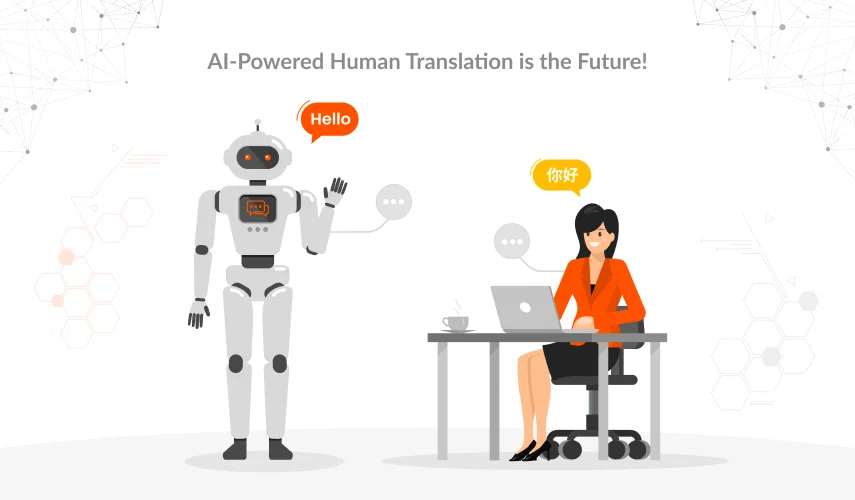There is no denying the fact that some technological innovations have changed the course of living. In this context, Translation Memory (TM) has revolutionized recording and tracking tremendously. TM has digitized the localization industry due to its astonishing features. It is saving the time span of the translators due to the reuse feature. Its speedy and cost-effective characteristics have fostered translation quality. Its centralized database has made it accessible to everyone from anywhere.
What is Translation Memory?
Translation memory (TM) is a database of previously translated terms and phrases. When new content matches previously translated content, the TM automatically suggests the translation. TM has become popular and indispensable in the technological and localization field. This tool has made remarkable changes in the international translation market.
By using Translation Memory (TM), the translator does not have to be dependent upon traditional dictionaries. Now the translator can use this tool and repetitive content can easily be translated if it matches already stored translated content.
How Translation Memory Works
Translation Memory (TM) works sentence-wise. Whenever you need to translate a sentence, directions go to memory software and the comparison will be held between new and old content. If the same sentence is present in memory, the computer-assisted-tool (CAT) will indicate the options to translators and present options to the translators such as:
- Replace your sentence with a new translation.
- You can use translation memory in translating the content.
- You can make modifications in the TM-provided context.
Each time, when the translation is submitted, it goes into the database. TM database is constantly evolving, and whenever a new word or phrase (string) is translated, translation memory recognizes it and is automatically added into memory for further use. That is how the database continues to grow. There are two types of matching:
- Exact Match: When a sentence matches the already translated sentence which is present in the translation memory is known as an exact match. As the name proves, 100 percent matching of new content with the stored content is called the exact match.
- Fuzzy Match: Fuzzy matches come into a cadre where sentences are similar but not as similar as 100 percent. The ratio of the matching ranges from 0-99% usually. The content which is 99% matching means it differs in one character. In fact, below-average matching like 70% indicates that it is not useful to use it as it is.
Advantages of Using Translation Memory (TM)
Here are some worth noting benefits of using translation memory:
Cost Effective
The more you translate, the less you pay. Because each time you translate, it goes into a database that can be used again if it matches. Resultantly, it lowers the cost as one does not need to spend money and energy on translating the already translated content.
Time-Saving
Apart from being cost-effective, translation memory is time-saving also. As the old saying goes, time flows and never comes back. Also, in the 21st century, time is more precious than money. All thanks to the features of collaborative translation systems which are continuously saving the time of translators and speeding up the translation process due to its storage features.
Boost Quality
The collaboration of project managers and linguistics efforts can redefine and upgrade TM’s data. As everyone accesses this database, their collaboration and efforts make the system reviewed and upgraded. That is how it continues to flourish which enhances the context of translation.
Centralized Database
Along with quality improvement, this is a highly centralized system. You can access it from any location. Translators, vendors, and even project managers can access and improve the efficiency of translation. When multiple translators work on the same project they will use the same suggestions and references generated by translation memory.
Consistent Translation
Translation memory keeps the consistency of translated content. It saves pairs of strings of text and regenerates them when the same string comes along in the translation of the other document. This helps to improve the consistency by using the parallel string for the same term.
To keep up the pace of consistency, TM facilitates previous translations to keep consistency when the same sentence needs to be translated for a future client.
Using Translation Memory Software to Improve Translation Quality
Translation memory software is integrated into the translation management system (TMS). A TMS is fully integrated into the entire localization process, while translation memory software is only used by translators and provides tools for project managers and designers. Translation memory software can be found in both free and paid versions. While it can be difficult to find free translation memory software with all the necessary features. There are some free options available that provide premium features, such as SmartCat, OmegaT, BasicCat, and Felix. However, the best features are typically only available in paid versions. Some of the best translation memory software options include Memosource, memoQ, and SDL Trados. According to research and surveys, SDL Trados is the top-ranked paid cloud-based translation memory software. This paid software gives users access to its fully customized features to improve translation quality.
Difference between Traditional and Modern TMS
Unlike modern methods, if you are using traditional translational memory software, you will need a large team to operate. Modern TMS has a centralized and cloud-based management system, this ensures transparency and easy accessibility for project managers, translation providers, and vendors. However traditional TMS was less transparent and not easy to access. Apart from that, if you are using old TMS, you are unable to download and you will remain stuck in using one vendor. Contrarily, modern TMS gives one to have control over the translation process where one can visit, analyze, and evaluate the options.
Maintaining the Quality of TM
Like every system, it also needs regular updates and a proper upgrading channel. Likewise, for the maintenance of quality, assessing and improving the database and terminologies according to context is a compulsion. There is no denying the fact that in dealing with multiple languages some terms must have different meanings based on their context. In this case, relying on translation memory without making required changes or improvements is useless. It is necessary to make improvements on different topics based on the context in order to avoid misinterpretation. To keep up the consistency, glossary management is necessary. Only by ensuring and maintaining the quality, you can rely on TM. This will lead to better results for future matching via translation.
Serving the Users in its Finest Form
TM is a data treasure, for better outcomes, you can reuse, edit, and alter this data. It facilitates its users not to start from scratch when the database has already translated content. Special thanks to the cloud-based system, it allows various users to access and use the system at a time from anywhere in the world. Moreover, it facilitates a tough situation where various translators, linguists, and other stakeholders have to give to the overall success of every translation project. Its maintenance, 24/7 accessibility, and creation fostered the translation quality and saved a huge amount of money and time for the owners.
Case Study: Systems Using Translation Memory
One of the most innovative localization management systems using TM is MarsCloud. This system brings enterprises, language service providers (LSPs), and linguistics systems under one umbrella. Their collaboration makes the process qualitative, fast, and easy. This system uses centralized translation memory to give consistent and fast results. To facilitate various-size projects, it is offering a web-based translation management system. Various integrated tools embedded with enriched features like glossaries and databases help the stakeholders boost the overall performance of the translation. Its cloud-based and advanced translation management system facilitates customized workflows according to each project. Having a centralized database, vendors, enterprises, and project managers can access the system anytime to communicate and to improve the quality of the translation.
Ending Note
In a nutshell, the success of any localized system depends upon its functionality, integrated tools, and data engines. Likewise, translation memory is a tool to facilitate qualitative results. Its constant connectivity and evolving nature are helping the translators and managers to improve the language services for the clients. Undoubtedly, translation memory is another milestone in the progress and development of technological and localization domains.



